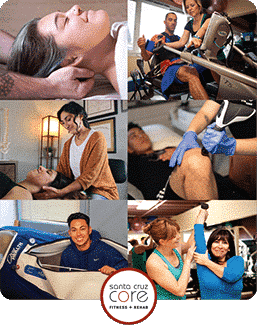Musculoskeletal pain and related soft tissue injuries affect the lives of many.

In 2012, one of every two American adults was affected by a type of musculoskeletal disorder (1). Musculoskeletal pain is one of the leading causes of disability, and many times it leaves individuals unable to engage in routine activities or perform well in a work setting. Additionally, every age group experiences musculoskeletal pain and it becomes increasingly common with age.
What’s worse, is that surgery is often presented to patients as the only treatment option for unresolved pain by physicians. Musculoskeletal pain contributes to stress, anxiety, disruptions in sleep, and therefore a lower quality of life. This leaves patients desperate to find a way out of pain and back to their daily lives.
Prolotherapy techniques including the Hackett-Hemwall dextrose, PRP (platelet-rich plasma), and stem cell injections all represent an alternative to surgery. These regenerative injection therapies are clinically proven to reinforce, strengthen, and repair soft-tissue structures (like tendons and ligaments) which are a major cause of musculoskeletal pain. Many times, prolotherapy techniques treat pain and dysfunction so effectively that surgery is completely avoidable.
Soft Tissue Injuries:
Musculoskeletal pain is due largely to soft-tissue injuries that remain unhealed. Incomplete healing in soft tissues is common, as these have poor circulation and also work as constant shock absorbers for everyday movements. Furthermore, MRIs cannot easily display soft tissue injuries and are therefore hard to diagnose.
Connective tissues commonly injured include tendons and ligaments. These soft tissue structures support the joints and joint mechanics. When injured and weakened, they contribute to joint instability and laxity. Over time, these unstable joint conditions and changes in biomechanics contribute to the development of degenerative disorders such as osteoarthritis (OA).
 Why are Prolotherapy + OMT Good Alternatives?
Why are Prolotherapy + OMT Good Alternatives?
Prolotherapy injections reinforce and repair connective tissues. It helps tighten loose ligaments and restore joint stability by promoting connective tissue growth and thickening. The injection of proliferating solutions induces an inflammatory healing cascade that then regenerates injured tissues. This combined with OMT (osteopathic manipulative treatment), which re-establishes structural alignment and treats for mechanical irregularities, then creates the perfect remedy for musculoskeletal pain.
Inflammation is an immune response that quarantines and repairs. By stimulating inflammation, the prolotherapy injection therefore tricks the body into tissue repair. Inflammation, in turn, helps recruit a variety of healing mechanisms. Mechanisms include the release of growth factors, the migration of stem cells, the maturation of fibroblasts, and lastly, the formation of collagen and its deposition (3)(4). This then results in reinforcement and stabilization of joint structures and the elimination of pain thereby avoiding surgery.
Administered in combination with OMT, prolotherapy shortens recovery speed. Additionally, the patient gets a boost in self-healing potential. Osteopathic manipulative techniques such as thoracic and abdominal lymphatic pumps help increase the levels of circulating immune components. These components include cytokines and leukocytes which amplifies the inflammatory immune response (5). OMT techniques also promote increased blood flow to soft tissues which allows for excess fluid and toxins in interstitial spaces to leave. Additionally, these techniques work to promote structural alignment and relieve any excess stress or pressure on joints.
Dr. Hauser’s Study:
The subject of prolotherapy as an alternative to surgery is not new in the medical community. Dr. Ross Hauser, M.D. carried out a small-scale study in patients who had been previously prescribed surgery as a treatment for pain. In the study, thirty-four individuals with unresolved musculoskeletal pain underwent prolotherapy as an alternative to surgery. Of these, 31 out of 34 were able to avoid surgery as their symptoms underwent statistically significant improvements (2). Their range of motion, stress levels, pain levels, stiffness, and sleep were all amongst symptoms monitored for improvement. The study showed that prolotherapy was successful in treating unresolved pain, restoring soft-tissue function, and also eliminating the need for surgery in over 80% of musculoskeletal pain cases.
Santa Cruz CORE offers both Prolotherapy and Osteopathic Manipulative Treatment (OMT). Our founder, Jaimi Jansen, can also personally vouch for the worth of trying these treatments as she uses them herself. Are you tired of being in pain and ushered in and out of surgeries with no relief? Then visit CORE for a free consultation with our Doctor of Osteopathy, Dr. John Grady!
References:
“Musculoskeletal conditions.” World Health Organization, World Health Organization, 15 Feb. 2018, http://www.who.int/mediacentre/factsheets/musculoskeletal/en/
Hauser, Ross A, et al. “Prolotherapy as an Alternative to Surgery: A Prospective Pilot Study of 34 Patients from a Private Medical Practice.”Journal of Prolotherapy, 19 Sept. 2017,journalofprolotherapy.com/prolotherapy-as-an-alternative-to-surgery-a-prospective-pilot-study-of-34-patients-from-a-private-medical-practice/.
Ko, Gordon D, and Donna Alderman. “Platelet-Rich Plasma Prolotherapy for Low Back Pain Caused by Sacroiliac Joint Laxity.” Practical Pain Management, PracticalPainManagement, Sept. 2010, www.practicalpainmanagement.com/pain/spine/platelet-rich-plasma-prolotherapy-low-back-pain-caused-sacroiliac-joint-laxity.
Hauser, Ross A, et al. “Journal of Prolotherapy International Medical Editorial Board Consensus Statement on the Use of Prolotherapy for Musculoskeletal Pain.” Journal of Prolotherapy, 14 Aug. 2017, journalofprolotherapy.com/journal-of-prolotherapy-international-medical-editorial-board-consensus-statement-on-the-use-of-prolotherapy-for-musculoskeletal-pain/.
Walkowski, Stevan, et al. “Osteopathic Manipulative Therapy Induces Early Plasma Cytokine Release and Mobilization of a Population of Blood Dendritic Cells. : Walkowski, Stevan: Free Download, Borrow, and Streaming.” Www.plos.org, The Public Library of Science, 10 Mar. 2014, journals.plos.org/plosone/article?id=10.1371/journal.pone.0090132.








